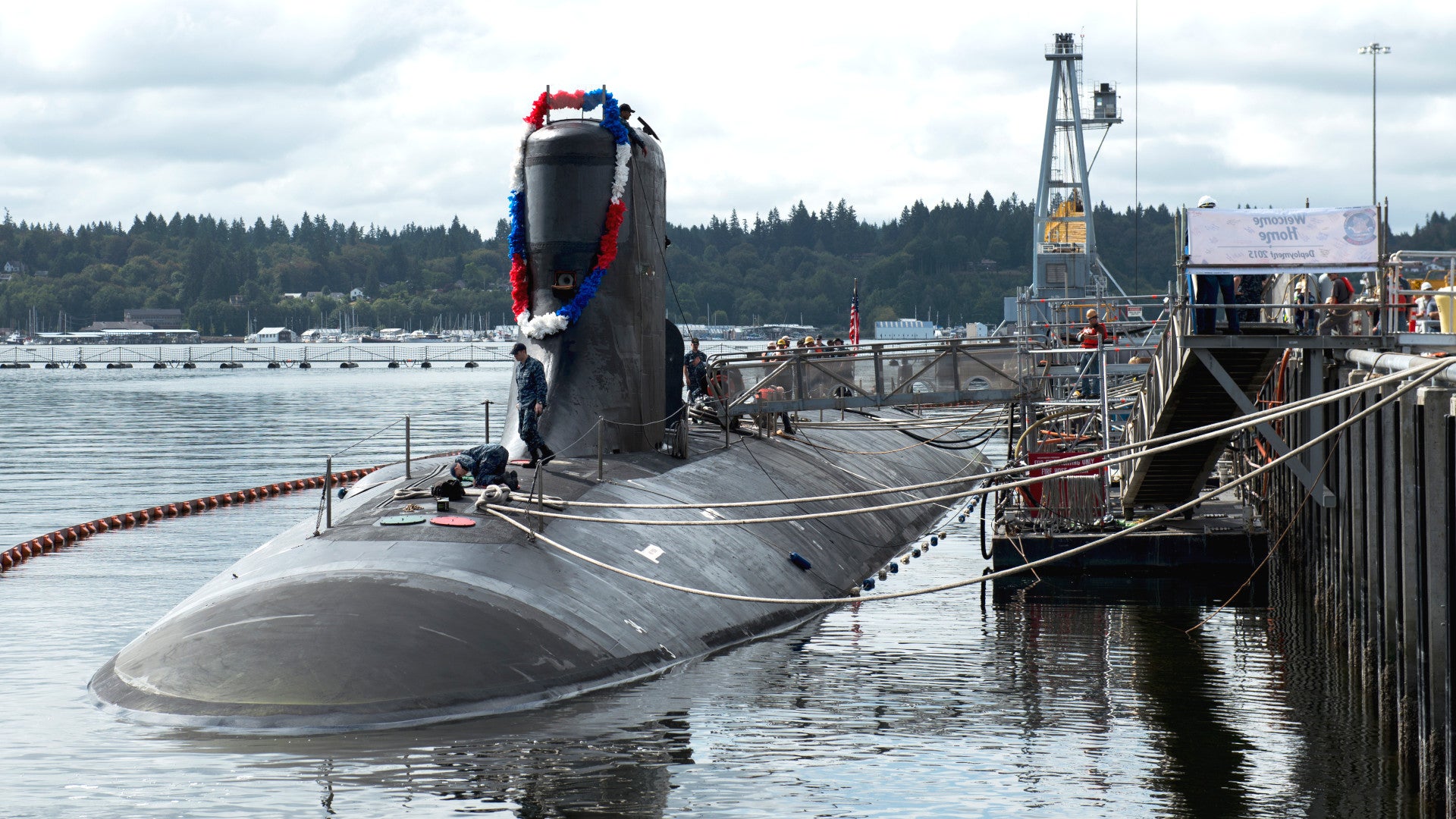In the past two months, Secretary of the Navy Kenneth Braithwaite has announced the names of three future Virginia class attack submarines. In a departure from the established convention, which the lead boat in the class had set, all three will be named after fish. The Navy’s boss says these monikers, all of which honor past submarines, will help the members of its Silent Service restore a link to important history and heritage after decades of sailing in boats primarily named after U.S. states and cities.
On Nov. 17, 2020, Braithwaite had revealed that two future Virginia class submarines, with the hull numbers SSN-805 and SSN-806, would be named USS Tang and USS Wahoo, respectively. The month before, he had announced that the forthcoming SSN-804 would receive the name USS Barb. All of these will be Block V boats with the additional Virginia Payload Module (VPM), which has four large-diameter launch tubes that will be capable of firing various weapons and potentially deploying other systems, including unmanned underwater vehicles (UUV). You can read more about these boats and their enhanced capabilities in this past War Zone piece.
As already noted, the Navy’s established naming convention for Virginia class boats is to name them after U.S. states. When it came to attack submarines, before that there had been the Los Angeles class, all but one of which, the USS Hyman G. Rickover, originally to be called USS Providence, were named after American cities.
In between those two classes, the Navy also acquired three Seawolf class attack submarines. The service had originally planned to buy 29 of these highly advanced boats, but growing costs together with defense spending drawdowns after the end of the Cold War led to that purchase being severely truncated. The first-in-class USS Seawolf, which was commissioned in 1997, is named after a fish, but the trio does not follow any real naming convention. The other two are the USS Connecticut, which presaged the Navy’s naming decision with regards to the Virginia class, and the USS Jimmy Carter.

These boats, which you can read about in more detail in this previous War Zone story, have since been leveraged heavily for intelligence-gathering and other specialized missions, including extended operations under the Arctic ice. Jimmy Carter is notably a unique subclass unto itself with the addition of a 100-foot-long Multi-Mission Platform (MMP) module in the center of the hull. The highly modified boat is now America’s top underwater espionage and special missions submarine.
Beginning in 1981, the Navy also began commissioning its newest ballistic missile submarines, the Ohio class, all but one of which, the USS Henry M. Jackson, are named after states. Henry M. Jackson was a long-time member of Congress from Washington state. Four of these were subsequently converted into guided missile submarines that also featured advanced command and control capabilities, which you can read about more in this previous War Zone feature.
“Naming Virginia class submarines is a unique opportunity to reclaim submarine names that carry inspirational records of achievement,” Braithwaite said in announcing the future USS Tang and USS Wahoo. Previous submarines with those names, as well as past USS Barbs, certainly have storied histories.
The USS Tang
The first USS Tang was a Balao class submarine that served during World War II in the Pacific. She sank a total of 33 ships, including Japanese warships, as well as freighters and tankers, over the course of five patrols in 1944. She also helped save downed airmen.

Her service came to an unceremonious end on Oct. 25 of that year, when she was sunk by one of her own torpedoes that went off course and came circling back at her. Of her crew of 87, only nine, including her captain at the time, Commander Richard O’Kane, survived and ended up in Japanese captivity. O’Kane subsequently received the Medal of Honor for his actions during the Tang‘s final two engagements against the Japanese.
O’Kane became something of a legend in the Navy’s submarine community and his cribbage board, which survived the sinking of the Tang, now goes into officer’s wardroom aboard whatever the oldest attack submarine on active duty is at present. The honor is now held by the Los Angeles class submarine USS Chicago, after the previous oldest boat, the USS Olympia, another member of the same class, left active service last year.
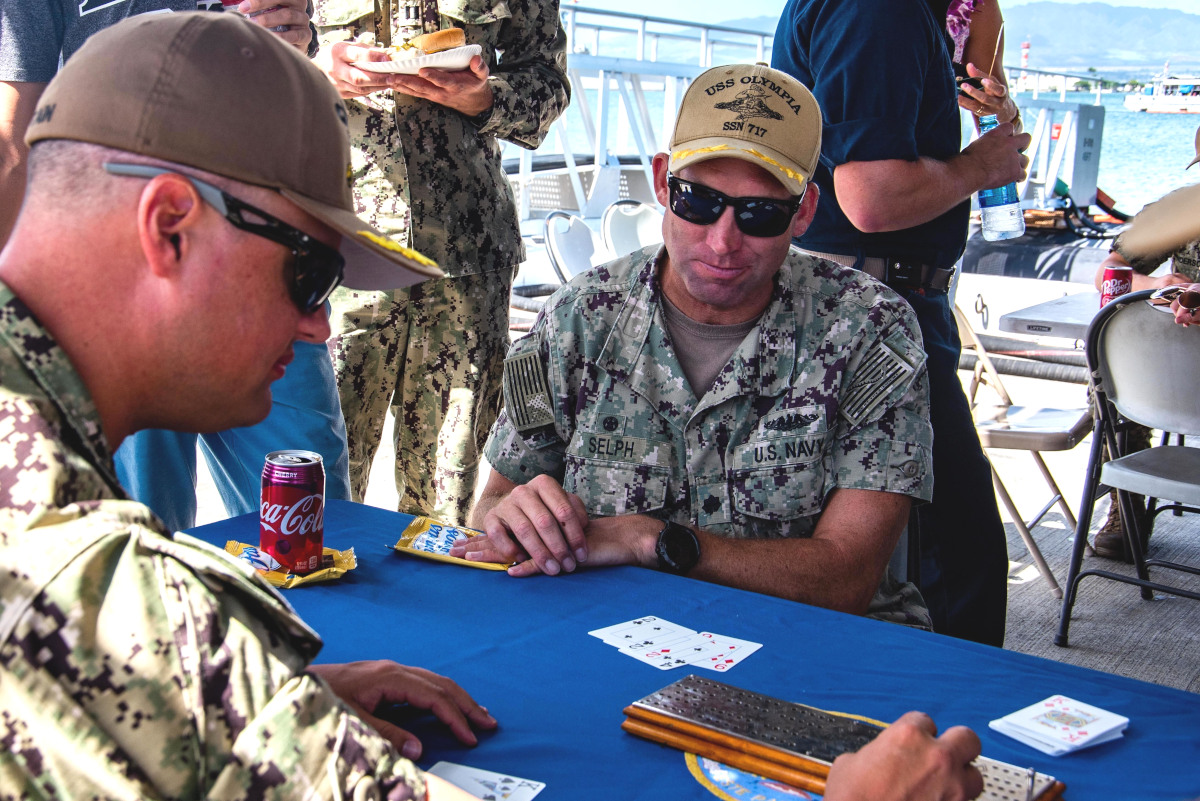
A second USS Tang was commissioned in 1951 and was the lead boat in her class of diesel-electric submarines. This boat conducted operations in the Pacific region in the 1950s and 1960s, including patrols in the South China Sea during the Vietnam War. Starting in 1972, the submarine underwent a major overhaul, which extended the hull-length by 22 feet and increased its displacement by 600 tons. A new passive sonar system was installed along with a Prairie Masker acoustic signature reduction system.
Afterward, this Tang returned to the Pacific until it underwent another overhaul in 1977 and was sent the following year to Groton, Connecticut, where it took up a new role, training sailors from the Imperial Iranian Navy. It also provided other training support to Navy units on the East Coast. The plan had been to eventually transfer the submarine to Iran, but those plans were halted after the Islamic Revolution in that country in 1979. The ex-USS Tang was eventually passed to the Turkish Navy in 1980, where the boat served with the new name Pirireis until 2004. It is now on display in the Turkish port city of Izmir.

The USS Wahoo
The original USS Wahoo, on which Commander O’Kane had served for a time as Executive Officer, was a Gato class submarine that also served in the Pacific during World War II. This boat sank 20 ships across seven patrols between 1942 and 1943 and became one of the most decorated submarines in the Navy at the time, earning six battle stars and a Presidential Unit Citation, which is given in recognition of “extraordinary heroism in action against an armed enemy.”
Wahoo sank in the La Pérouse Strait in the Sea of Japan sometime in October 1943 in the wake of a Japanese aerial attack. There were no survivors and the exact location of the wreck was not confirmed until 2006.

The Navy tried twice to name a Tench class submarine Wahoo, but that never came to be amid a raft of canceled submarine orders late in the Second World War and immediately afterward. The service did eventually name one of the 1950s-era Tang class submarines after this storied World War II-era boat.
As with the first submarine in that new class, this second USS Wahoo also spent most of its career in the Pacific, including conducting patrols in support of the Vietnam War. Just like the first-in-class USS Tang, this boat relocated to the East Coast in 1977 ahead of what was supposed to be a transfer to the Imperial Iranian Navy. After the Islamic Revolution in Iran upended those plans, Wahoo was decommissioned in 1980 and was used as a source of spare parts for other Tang class submarines until it was finally stricken from the rolls for good in 1983 and subsequently sold for scrap.
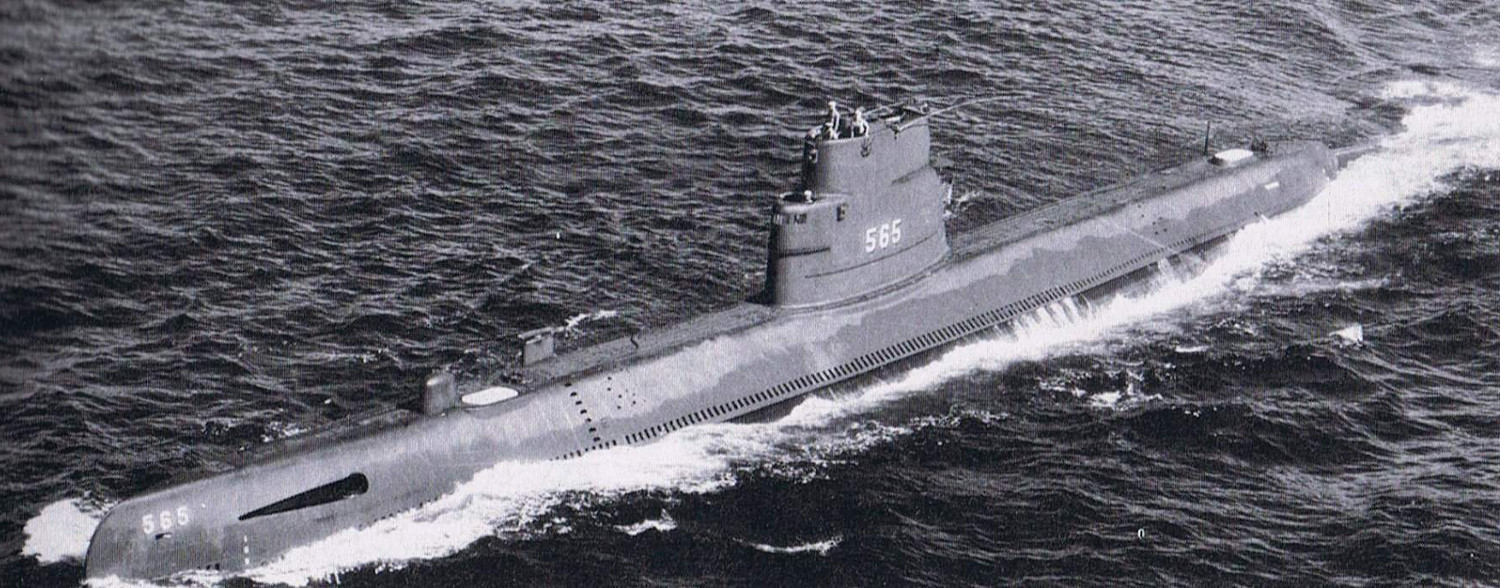
The USS Barb
The Navy’s first USS Barb was a Gato class submarine that served in both the Atlantic, as well as other bodies of water around Europe, and the Pacific. She is credited with sink 17 ships over the course of 12 patrols, in total.
Barb‘s first patrol was in support of the allied invasion of North Africa, nicknamed Operation Torch, which began in late 1942. She then conducted four more patrols around Europe hunting Axis blockade runners during which she sank one German ship.

The submarine was then sent to the Pacific, arriving in Pearl Harbor in September 1943. The boat’s seven subsequent patrols in that theater left it with an impressive combat record, including the sinking of the Japanese escort carrier Un’yō in September 1944.
On the night of Jan. 22-23, 1945, Barb managed to penetrate inside what was then known as Namkwan Harbor on China’s Hainan island, which the Japanese controlled at the time. The submarine sunk or damaged multiple ships sitting at anchor before withdrawing to safety, despite having no charts of the shallow and heavily mined waters inside what is known today as the Port of Yangpu. This action earned the boat a Presidential Unit Citation.
Before her final patrol, which began in June 1945, Barb was fitted with an array of five-inch rocket launchers on the deck, which the boat’s crew subsequently used to bombard multiple coastal towns in the Japanese home islands. During this patrol, the crew also sent a raiding party ashore that is credited with blowing up a train.
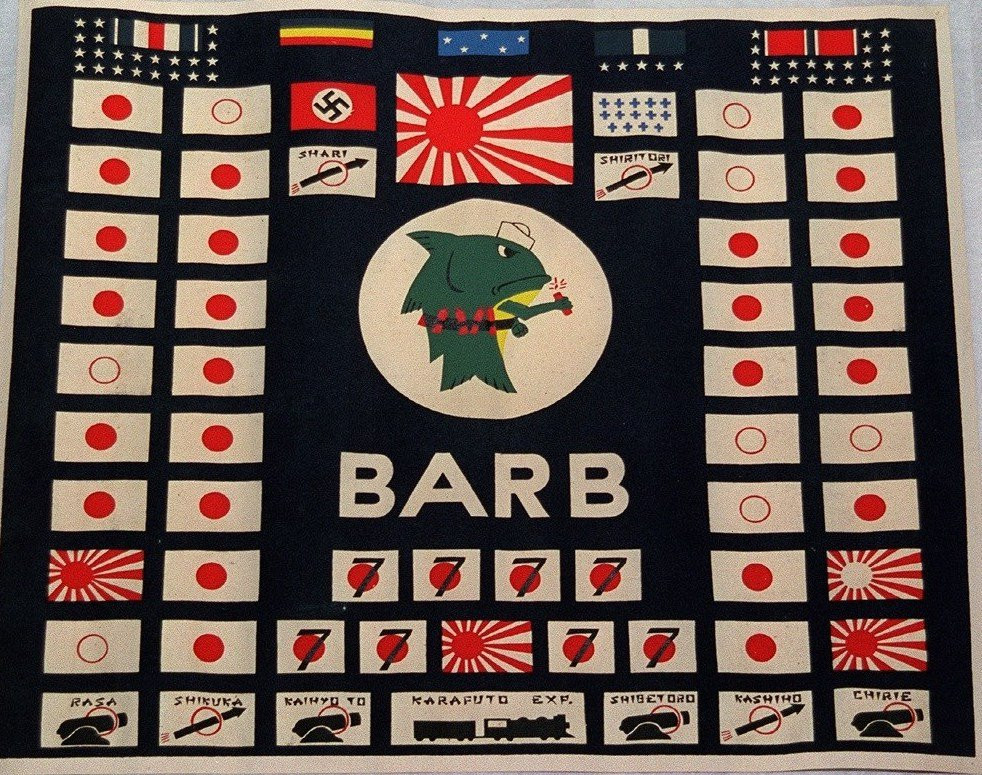
Barb survived the war, having destroyed the most Japanese ships by tonnage, and was placed in reserve status in 1946, before being decommissioned the following year. The Navy recommissioned the boat in 1951 and it operated in the Atlantic until it was decommissioned again in 1954. The service then put it through the Greater Underwater Propulsion Power Program (GUPPY) conversion program. Gato, as well as Balao and Tench class submarines, received the GUPPY upgrades, which were derived from features found on captured German Type XXI U-boats and offered extra speed when sailing submerged, as well as improved maneuverability and greater endurance.
The Navy again recommissioned Barb in August 1954, but decommissioned her for the last time less than four months later and transferred her to the Italian Navy. The Italians operated the boat for some time after that, having renamed it the Enrico Tazzoli, and subsequently sold it for scrap in 1972.
In 1963, the Navy commissioned a second USS Barb, a nuclear Permit class submarine. The Permit class had been known as the Thresher class until the USS Thresher was lost in an accident in 1963, an incident that remains a source of controversy.

This second Barb operated in the Pacific right up until the last years of the Cold War. She was notably responsible for reporting unusual Soviet naval activity in April 1968, which subsequently turned out to be search efforts for the stricken Golf-II class ballistic missile submarine K-129. The U.S. Central Intelligence Agency (CIA) famously mounted a highly-classified effort to recover that sunken boat, nicknamed Project Azorian. The Hughes Glomar Explorer, a modified drillship, built at the direction of Howard Hughes in cooperation with the CIA, was ultimately only able to pull a portion of K-129 up from the bottom of the ocean in 1974.
This submarine also received a Meritorious Unit Commendation for rescuing survivors of a U.S. Air Force B-52 bomber that crashed in the Pacific near Guam in 1972 as Typhoon Rita slammed the area. In 1977, the boat was selected as a test platform for the submarine-launched version of the Tomahawk land-attack cruise missile.
The Navy decommissioned this USS Barb in 1989.
Fish names are back
Before Braithwaite’s announcement about the future USS Barb, Seawolf had been the last Navy submarine named after a fish. Before that, the Sturgeon class had been the last Navy submarine class where the formal convention had been to name them after denizens of the deep. The Navy decommissioned its last Sturgeon class boat, USS Parche, a heavily modified spy submarine akin to the USS Jimmy Carter that followed it, in 2005. The Navy also operated a unique diesel-electric research and development submarine, USS Dolphin, until 2007.

It’s also worth noting that exceptions generally prove the rule when it comes to Navy ship naming conventions. There are already two Virginia class submarines set to be named after notable Americans, rather than states. These are the future USS John Warner and USS Hyman G. Rickover. The Los Angeles class USS Hyman G. Rickover was decommissioned in 2006.
John Warner was a long-time Senator from Virginia who also served as Secretary of the Navy under President Richard Nixon. He had also fought in World War II and the Korean War with the U.S. Marines.
Admiral Hyman G. Rickover, a Polish Jewish immigrant who first joined the Navy in 1922, is described as the “Father of the Nuclear Navy” and ran the service’s Naval Nuclear Propulsion Program for just over three decades after its creation in 1949. Rickover, who eventually became something of a controversial figure, was forced into retirement in 1982, at the age of 82, and died in 1986. He remains, by far, the longest-serving director of the Navy’s main nuclear office, also commonly known simply as Naval Reactors.
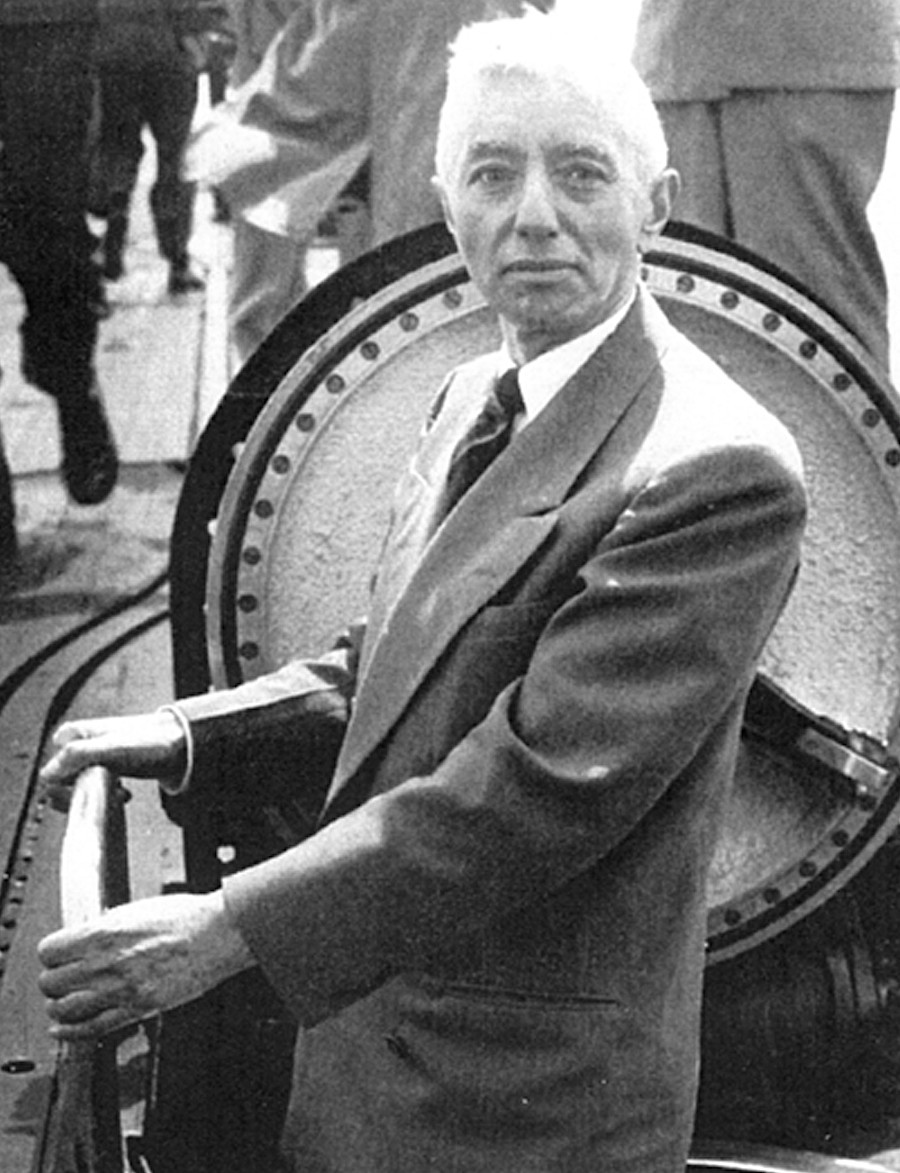
“Fish don’t vote!”
It’s perhaps somewhat amusing that the future USS Hyman G. Rickover will share space with at least three other Virginia class submarines named after fish. Rickover is said to have been responsible for ending the convention of naming submarines after denizens of the deep. Admiral James Watkins, who was Chief of Naval Operations, the Navy’s top officer, from 1982 to 1986, said that the head of Naval Reactors had once declared to him “Fish don’t vote!”
The idea, at least in theory, was that establishing a more visible link to specific American constituencies, even land-locked ones, would create a sense of attachment to individual boats, which in turn would help sway members of Congress to approve funding for new submarines. A similar logic appears to have been applied to the Navy’s two subclasses of Littoral Combat Ships (LCS), the bulk of which are also named after U.S. cities.
It’s not entirely clear if the Braithwaite truly intends to continue naming new submarines after fish, or if the names of other notable, now-decommissioned submarines that have nothing to do with undersea fauna may also make comebacks. For instance, for a time, the Navy had named ballistic missile submarines after notable Americans, including multiple Presidents, and even foreign historical figures. The Benjamin Franklin class USS Simon Bolivar, named after the Venezuelan revolutionary hero who led multiple Latin American countries to independence from Spain in the 19th century, is perhaps one of the more interesting examples.
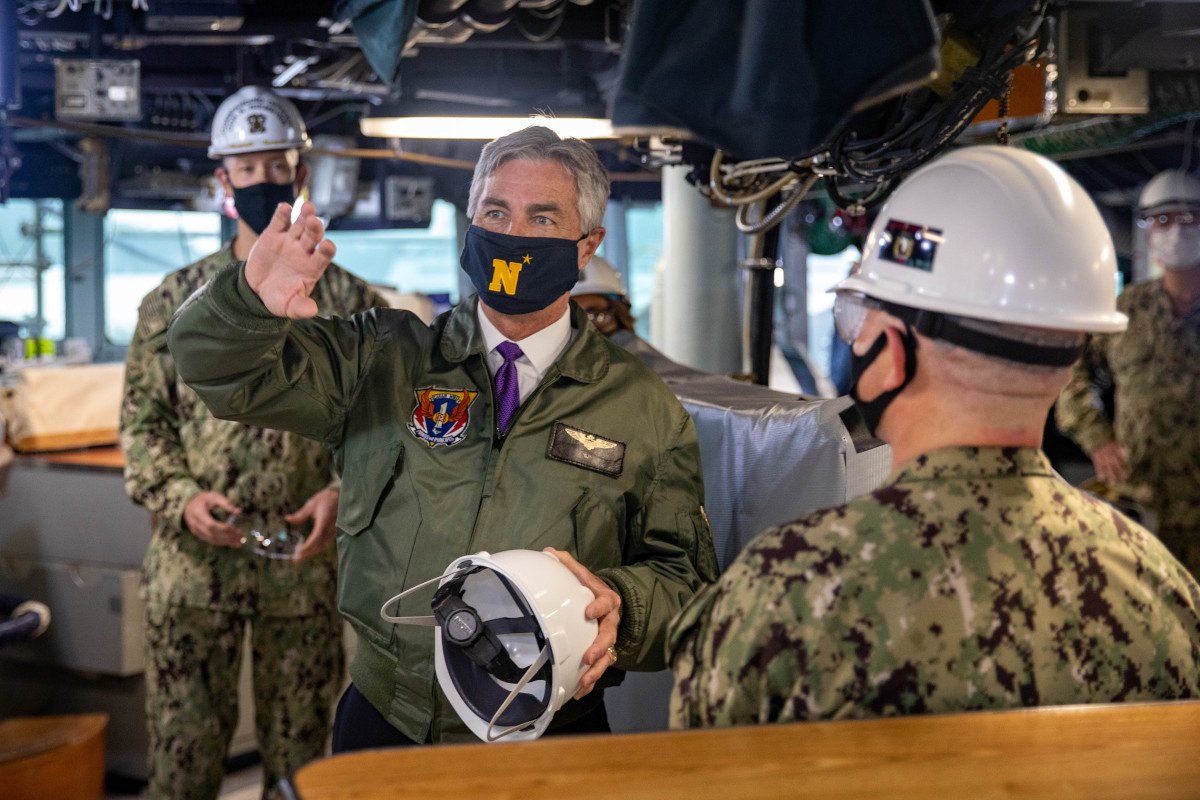
The latest edition of the Congressional Research Service’s (CRS) report on ship naming, which is dated Nov. 16, the day before Braithwaite announced the future USS Tang and USS Wahoo, does not say that there has been any formal change in the naming convention for the Virginia class. It also says that the Navy has yet to state publicly how it plans to name its Columbia class ballistic missile submarines, despite the general belief being that these will be named after states, just like the Ohio class. Congress may well have their own opinions on all of this and ship naming can often be a politically-charged issue on the Hill, which is the reason CRS’ report exists in the first place.
World War II-era submarines, all named after fish, are among the most likely to have had the “inspirational records of achievement” that Braithwaite says he is now looking to honor. There will definitely be more submarines in need of names in the future, too, with the Navy’s current highly ambitious force plan calling for between 70 and 80 total boats to be in service by 2045. Right now, the service is planning to acquire Block VI Virginia class boats ahead of the planned future introduction of an all-new attack submarine, presently referred to as SSN(X). That design is expected to be based, at least in part, on the Columbia class and have features carried over from the Block VI Virginias.
If nothing else, the Secretary of the Navy has made clear that any formal or informal prohibition the service had on naming new submarines after fish is gone, at least as long as he is in the post.
Contact the author: joe@thedrive.com
